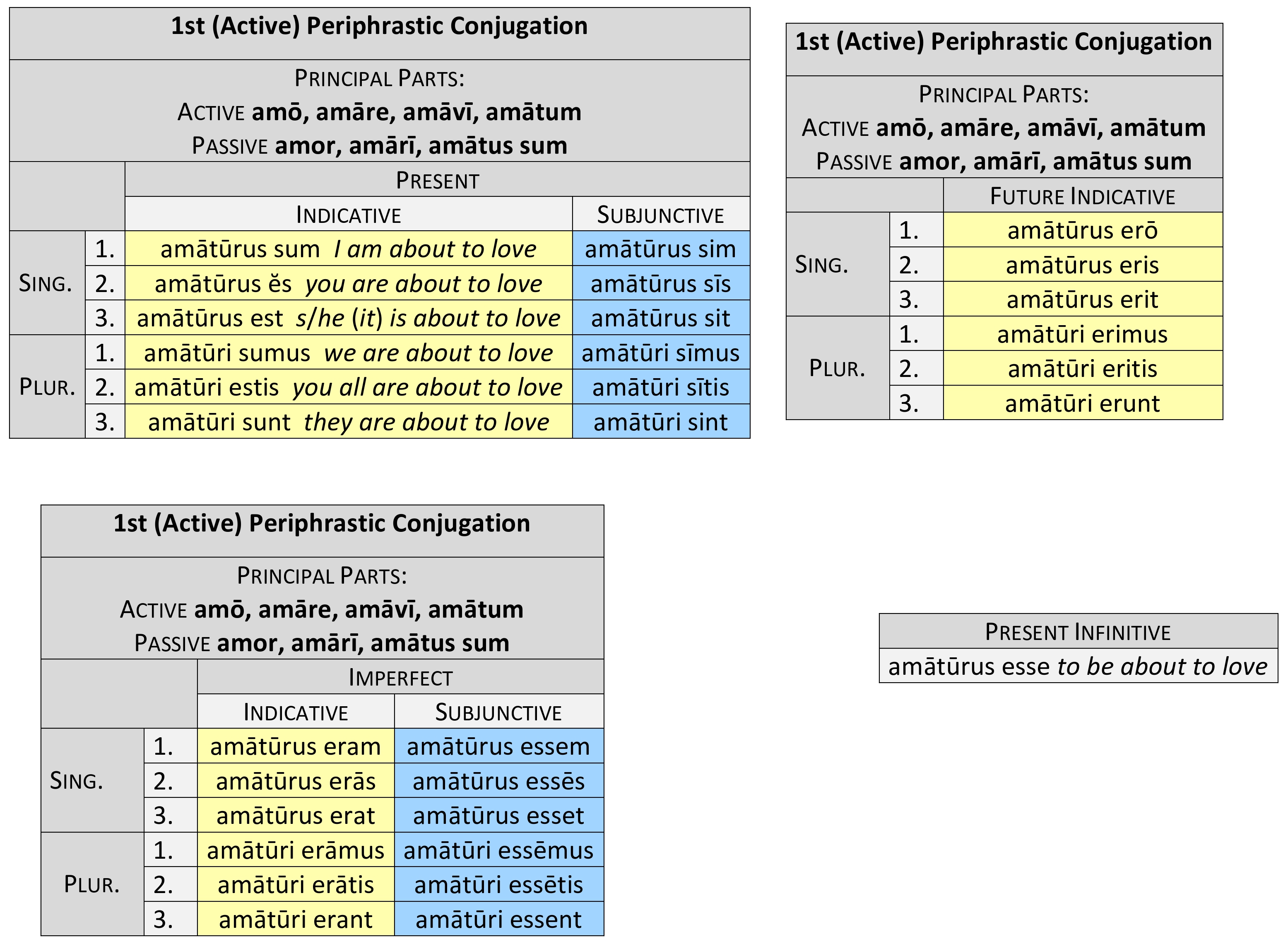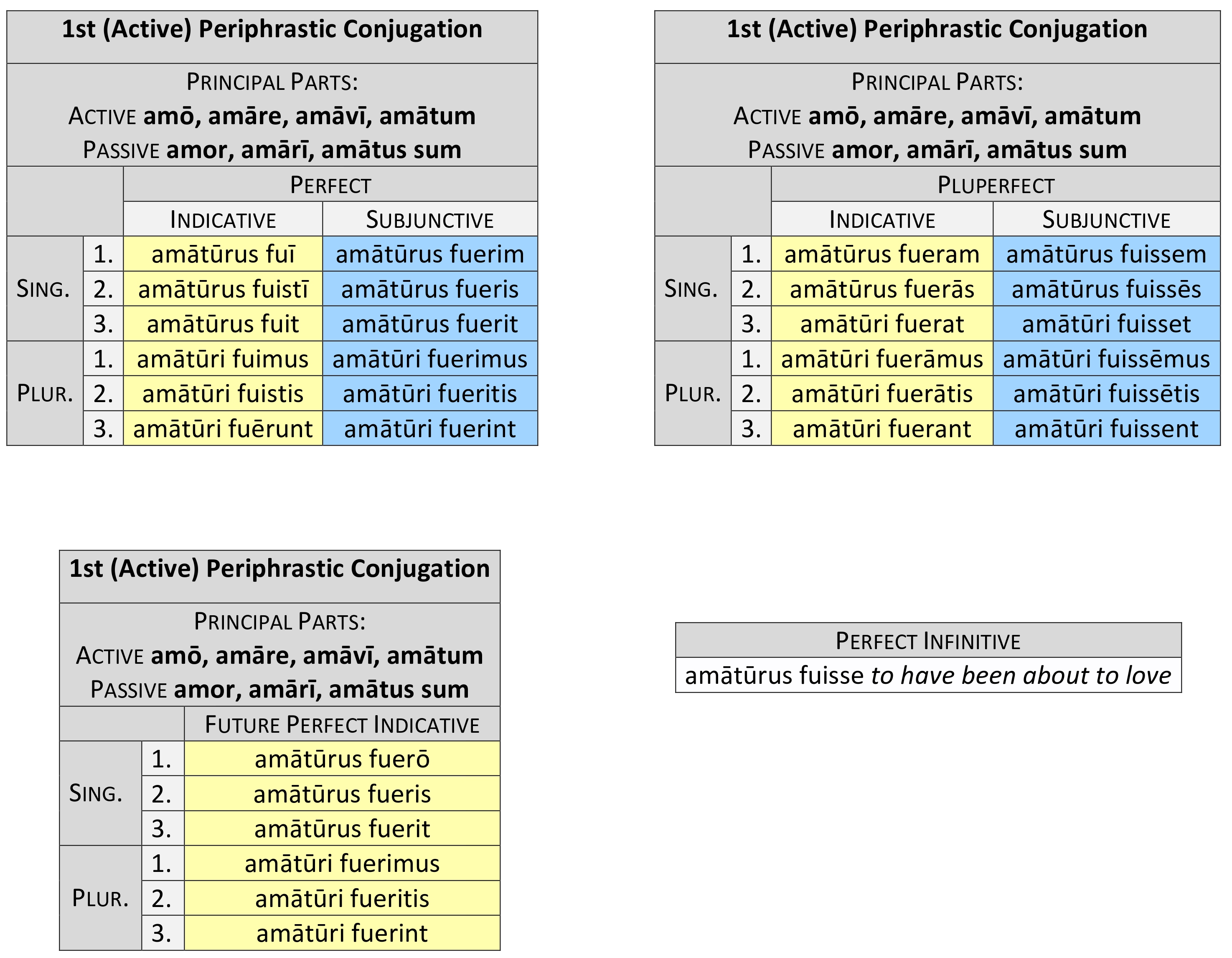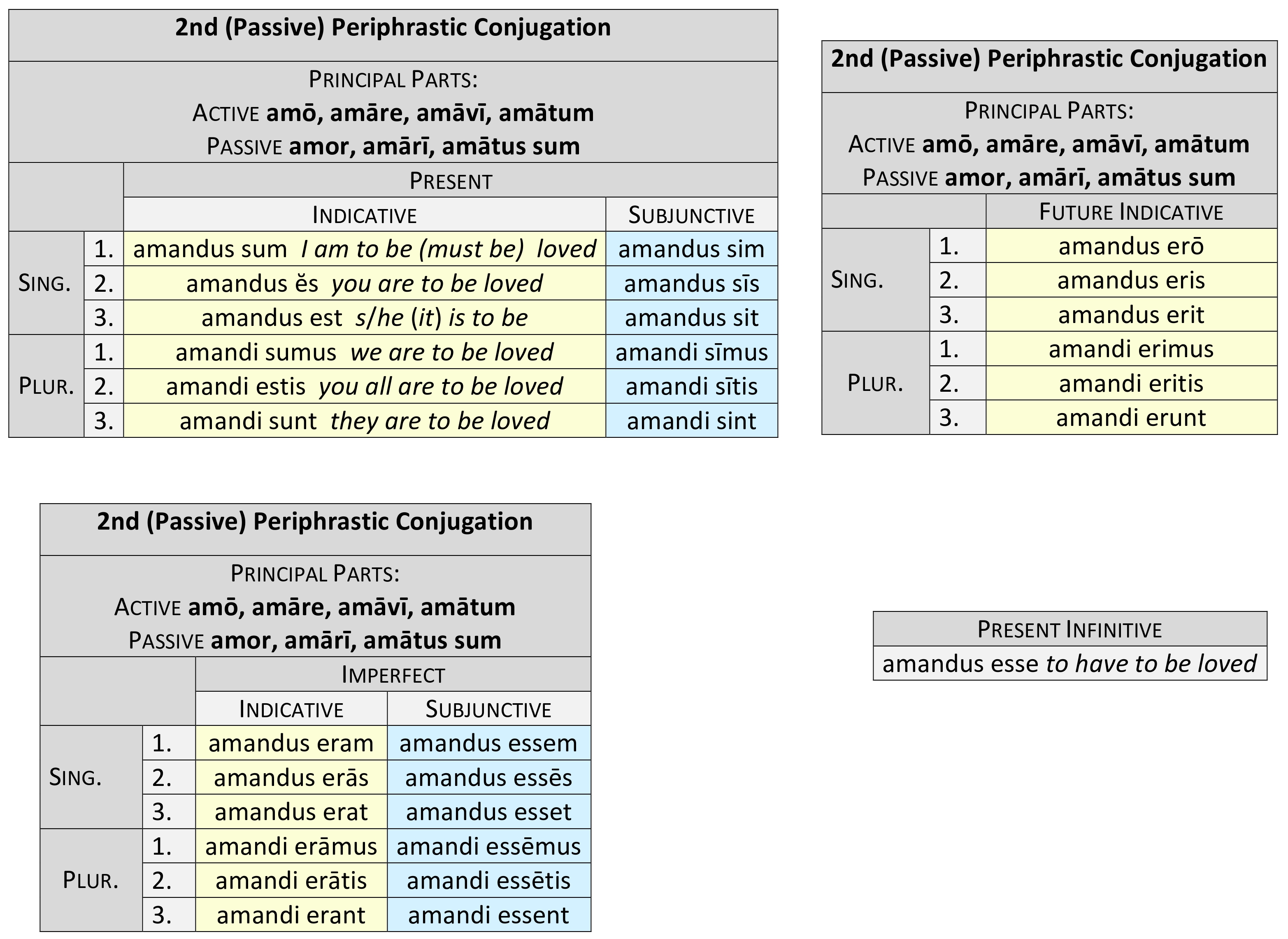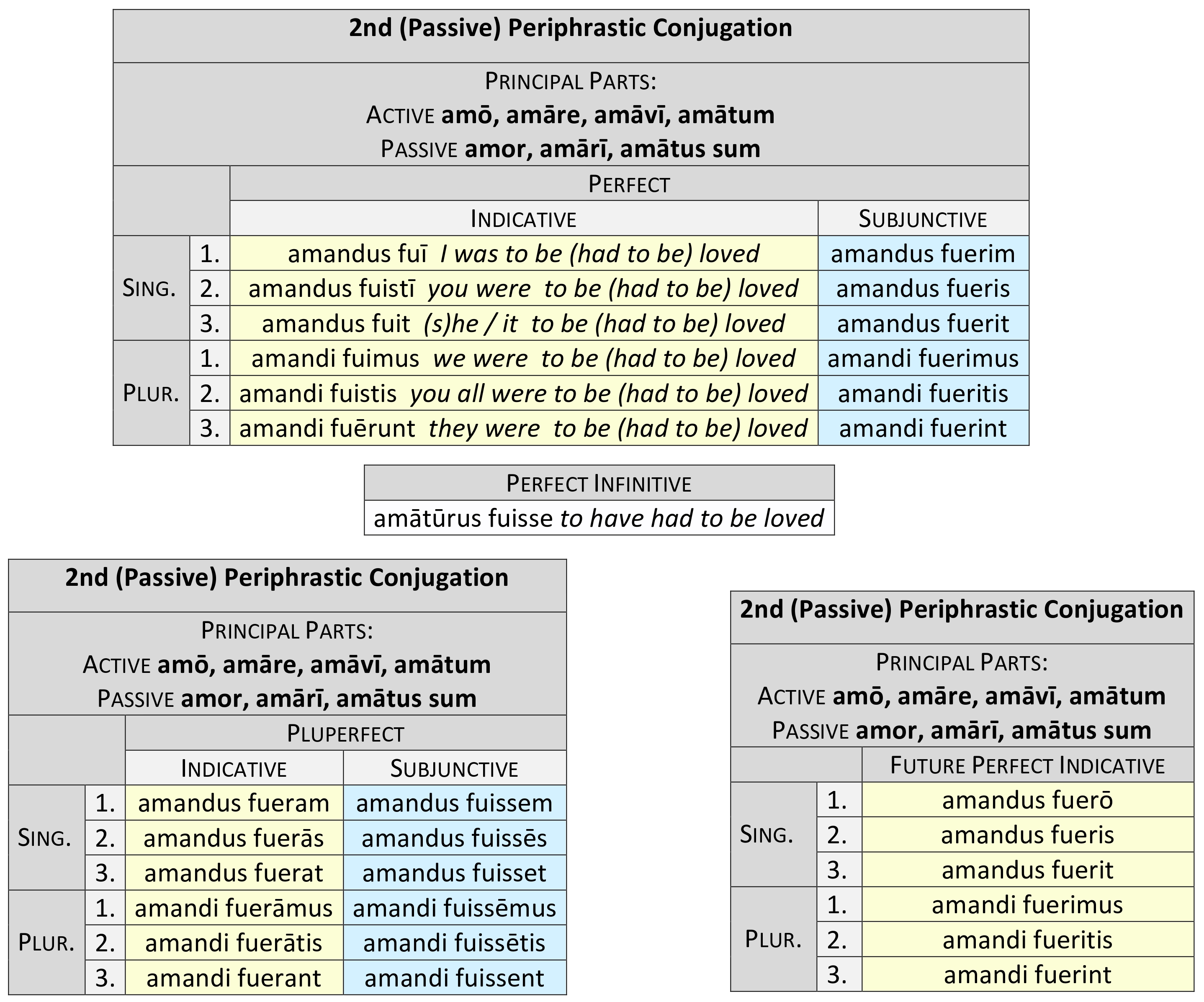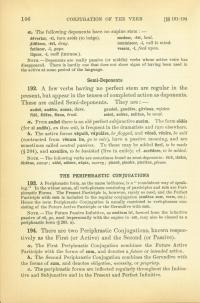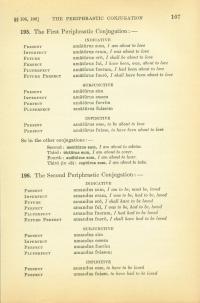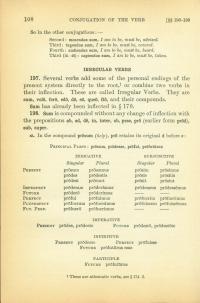193. A Periphrastic form, as the name indicates, is a “roundabout way of speaking.” In the widest sense, all verb phrases consisting of participles and sum are periphrastic forms. The Present Participle is, however, rarely used so, and the Perfect Participle with sum is included in the regular conjugation (amātus sum, eram, etc.). Hence the term Periphrastic Conjugation is usually restricted to verb phrases consisting of the Future Active Participle or the Gerundive with sum.
Note— The Future Passive Infinitive, as amātum īrī, formed from the passive infinitive of eō, go, used impersonally with the supine in -um, may also be classed as a periphrastic form (§ 203.a).
194. There are two Periphrastic Conjugations, known respectively as the 1st (or Active) and the 2nd (or Passive).
a. The 1st Periphrastic Conjugation combines the Future Active Participle with the forms of sum, and denotes a future or intended action.
b. The 2nd Periphrastic Conjugation combines the Gerundive with the forms of sum, and denotes obligation, necessity, or propriety.
c. The periphrastic forms are inflected regularly throughout the Indicative and Subjunctive and in the Present and Perfect Infinitive.
195. The 1st (Active) Periphrastic Conjugation
So in the other conjugations—
2nd: monitūrus sum I am about to advise
3rd: tēctūrus sum I am about to cover
4th: audītūrus sum I am about to hear
3rd -iō: captūrus sum I am about to take
196. The 2nd (Passive) Periphrastic Conjugation
So in the other conjugations—
2nd: monendus sum I am to be (must be) advised
3rd: tegendus sum I am to be (must be) covered
4th: audiendus sum I am to be (must be) heard
3rd -io: capiendus sum I am to be (must be) taken

